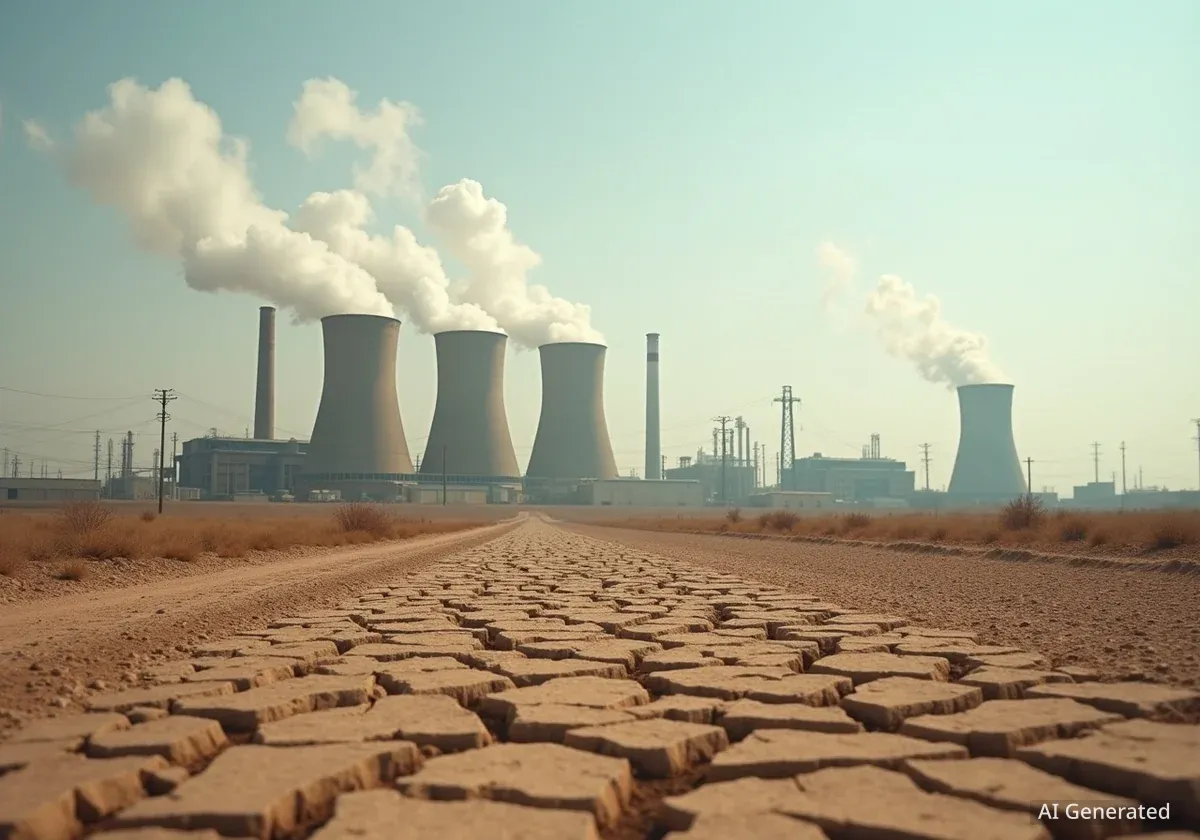A simple experiment involving three tiny houses and tons of ice under the hot August sun has cast a bright light on one of New Mexico's most significant energy challenges. The demonstration revealed that while modern homes are built for efficiency, the state's vast number of older houses are quietly draining wallets and straining the power grid, highlighting an urgent need for widespread energy retrofits.
The project, known as the Northern New Mexico Ice Box Challenge, showed that a structure built to 1950s standards became hotter inside than the scorching 90-degree temperature outside. This finding underscores a critical issue for a state where the majority of homes were built decades before modern energy codes were established.
Key Takeaways
- An experiment in Santa Fe demonstrated that homes built to pre-1980s standards are extremely energy inefficient compared to modern homes.
- In New Mexico, 80% of homes were constructed before 1990, representing a massive opportunity for energy savings through retrofitting.
- Residential properties consume one-third of all electricity produced for the state, making home efficiency a critical factor in grid stability.
- Upgrading older homes with modern insulation and weatherization can significantly lower utility bills and improve living conditions for residents.
A Tale of Three Houses
To visualize how building standards impact energy use, a coalition of local organizations including the Santa Fe Area Home Builders Association and YouthWorks conducted a compelling public experiment. They constructed three small, identical casitas, each built to a different energy code, and placed them in the summer sun.
Each structure was filled with 600 pounds of ice, and monitors tracked the internal temperature and the rate at which the ice melted. The results provided a clear, undeniable lesson in building science.
The Clear Winner and Loser
The first casita, built to the ultra-efficient passive-house standard with thick, continuous insulation, performed exceptionally well. Its interior remained a cool 60 degrees Fahrenheit even as outside temperatures climbed into the 90s. The second house, constructed to New Mexico's current 2021 building code, also proved highly effective at keeping the heat out, demonstrating the value of modern construction standards.
The third casita, however, told a different story. Built to represent a typical 1950s-era home with minimal insulation, it failed dramatically. The interior temperature soared past 90 degrees, becoming even hotter than the air outside. The ice melted rapidly, showcasing how such homes constantly struggle to maintain comfortable temperatures.
A Statewide Issue
The problem demonstrated by the 1950s-style casita is not an isolated one. An estimated 50% of all homes in New Mexico were built before 1980, and 80% were built before 1990, long before energy efficiency became a standard part of construction codes.
The High Cost of Inefficiency
The inefficiency of New Mexico's aging housing stock has massive implications for both individual households and the state's infrastructure. Homes are responsible for consuming roughly one-third of all electricity generated for New Mexico. As temperatures rise and cooling demands increase, these poorly insulated homes place an enormous strain on the power grid.
For families living in these properties, the financial burden is direct and persistent. High energy bills for heating in the winter and cooling in the summer can strain household budgets, particularly for modest-income families. Improving the energy performance of these homes is not just an environmental goal; it is a matter of economic justice.
"While there is some enthusiasm for adopting new green-building codes to increase energy efficiency for new home construction, a greater opportunity for economic justice... resides in programs that assist modest-income families to upgrade the energy performance for older homes," noted Miles Conway, CEO of the New Mexico Home Builders Association.
This perspective suggests that focusing solely on new construction misses the biggest piece of the puzzle. The most significant gains in energy conservation and cost savings are to be found within the millions of square feet of existing residential buildings.
A Long History of Building Codes
The concept of holding builders accountable is ancient. The Code of Hammurabi, written around 1750 B.C., included a law stating that a builder whose poorly constructed house collapsed and killed the owner would be put to death. While modern consequences are less severe, the principle of ensuring safe and effective construction remains central to today's building codes.
The Path to a Solution: Retrofitting
The solution to this widespread problem lies in retrofitting—the process of upgrading existing buildings with modern materials and technologies. The 1950s-era casita from the Ice Box Challenge is set to demonstrate this. It will undergo a simple insulation upgrade to meet current code standards before being repurposed as emergency housing for the Esperanza Shelter.
This simple act illustrates the potential for transformation. By adding proper insulation to walls, ceilings, and floors, an inefficient structure can become comfortable, safe, and affordable to maintain.
Available Resources and Challenges
Several programs in New Mexico are already working to address this issue. Organizations like Housing New Mexico’s Energy$mart Weatherization Program, Santa Fe Habitat for Humanity, and YouthWorks provide assistance to low- and middle-income families to help them afford these crucial upgrades.
However, for working families who earn too much to qualify for assistance, the upfront cost of a professional energy retrofit can be a significant financial hurdle. Despite the challenge, both professional services and DIY options are available. The return on investment is clear and tangible, realized through consistently lower monthly utility bills and a more comfortable living environment.
As New Mexico moves toward a future powered by renewable energy, reducing overall demand is as important as building new generation capacity. By focusing on its existing homes, the state can unlock a massive source of energy savings, build a more resilient grid, and provide direct financial relief to thousands of its residents.


